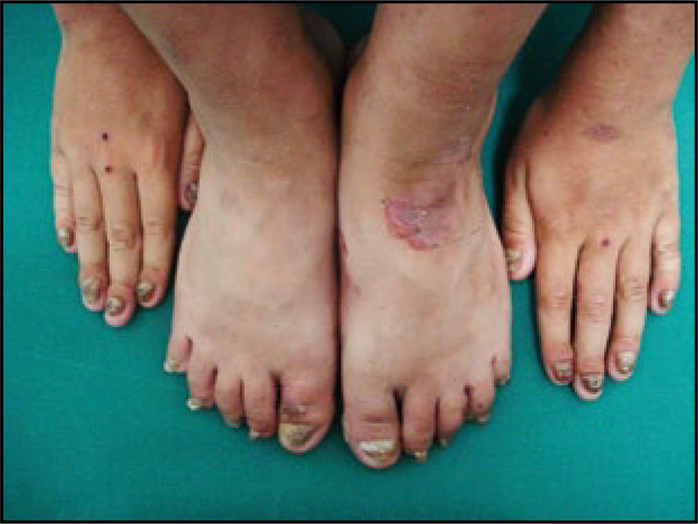Pachyonychia congenita: a case report.
Keywords:
pachyonychia congenita, cytokeratins, nails malformedAbstract
Pachyonychia congenita is a rare genodermatoses, caused by mutations of keratins genes K6a, K16 (PC type I) and K6b, K17 (PC type 2). We report the case of an 8 year old patient, with congenital pachyonychia of the 20 nails, leukokeratosis oris and the absence of steatocystomas. Based on the clinical findings and the family history we considered the diagnosis of PC type 1.
Author Biographies
Mónica Lorena Cárdenas
Residente I año de Dermatología. Universidad del Valle
Luis Fernando Balcázar
Dermatólogo docente. Escuela de Dermatología de la Universidad del Valle.
Natalia Vargas
Residente III año de Dermatología. Universidad del Valle.
References
2. Leacman S, Kaspar R. Clinical and pathological features of pachyonychia congenita. J Investig Dermatol Symp Proc. 2005;10:3-17.
3. Leachman S, Hickerson R, Hull P, Smith F, Milstone L. Therapeutic siRNAs for dominant genetic skin disorders including pachyonychia congenita. J Dermatol Sci. 2008;51:151-7.
4. Judge MR, Mclean WH, Munro CS. Disorders of keratinization. En: Burns T, Breathnach S, Cox N, Griffiths C, editores. Rook´s textbook of dermatology. 7th edition. Mashachusetts: Blackwell Publishing; 2004. p. 34.89-34.91.
5. Liao H, Sayers J, Wilson N, Irvine A, Mellerio J. A spectrum of mutations in keratins K6a, K16 and K17 causing pachyonychia congenital. J Dermatol Sci. 2007;48:199-205.
6. Milstone L, Fleckman P, Leachman S, Leigh I. Treatment of pachyonychia congenita. J Investig Dermatol Symp Proc. 2005;10:18-20.
7. Swartling C, Vahlquis A. Treatment of pachyonychia congenita with plantar injections of botulinum toxin. Br. J.Dermatol. 2006;154:763-5.
8. Hickerson RP, Leake D, Pho LN, Leachman SA, Kaspar RL. Rapamycin selectively inhibits expression of an inducible keratin (K6a) in human keratinocytes and improves symptoms in pachyonychia congenita patients. J Dermatol Sci. 2009;56:82-8.
How to Cite
Downloads

Downloads
Published
How to Cite
Issue
Section
| Article metrics | |
|---|---|
| Abstract views | |
| Galley vies | |
| PDF Views | |
| HTML views | |
| Other views | |






